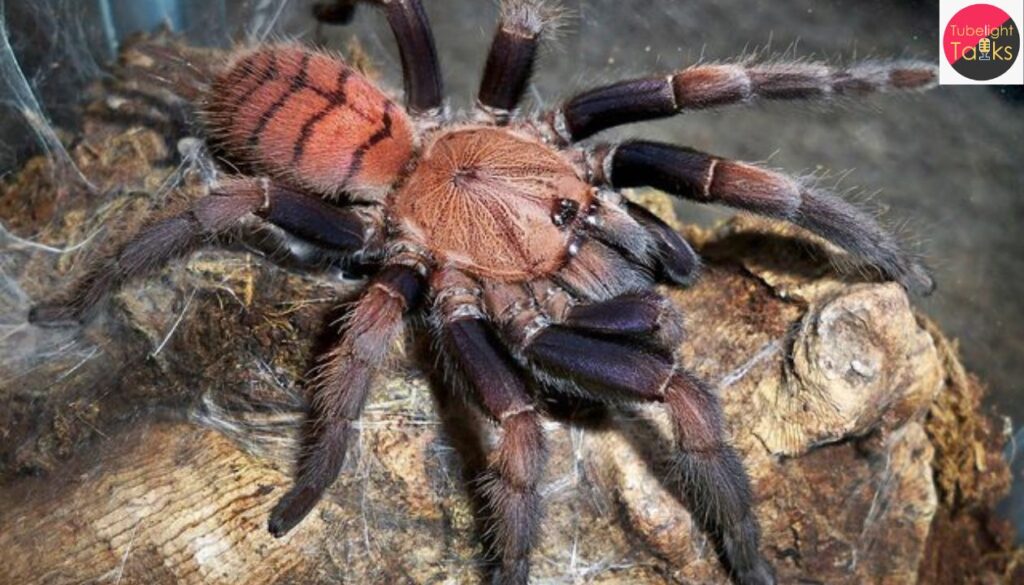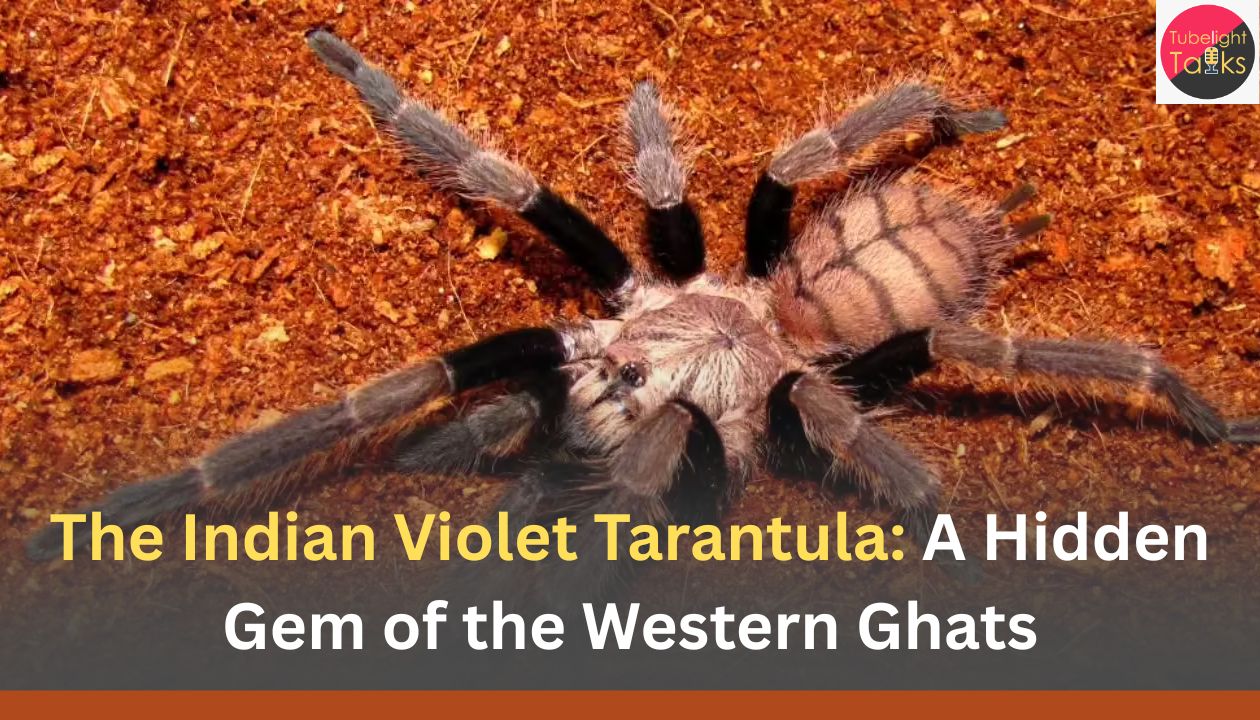The Indian Violet Tarantula: Nature has a way of surprising us — and sometimes, its most beautiful creations hide in the shadows. One such marvel is the Indian Violet Tarantula (Chilobrachys fimbriatus), a rare and dazzling spider found deep within the forests of the Western Ghats. Recently, this mesmerizing creature has caught the attention of wildlife enthusiasts, conservationists, and social media users alike for its vibrant violet sheen and ecological significance.
A Jewel of the Western Ghats
The Western Ghats, one of India’s most biodiverse regions, is home to countless rare species, but the Indian Violet Tarantula stands apart. Its body glows with hues of metallic violet and deep blue, shimmering beautifully under light — a sight so striking that even those with arachnophobia can’t help but be fascinated.
Scientifically known as Chilobrachys fimbriatus, this tarantula belongs to the family Theraphosidae. Despite its alluring appearance, it’s not just a creature of beauty — it plays a crucial role in maintaining the balance of forest ecosystems by controlling insect populations.
Habitat and Lifestyle
The Indian Violet Tarantula is endemic to India, mainly inhabiting the moist deciduous forests and lateritic plateaus of Maharashtra, Goa, and Karnataka. These spiders are fossorial, meaning they live in deep burrows. They use their silk not only to line their homes but also to sense vibrations — alerting them to nearby prey or predators.
Unlike common web-weaving spiders, tarantulas like this one are ambush predators. They rely on patience and stealth, emerging silently at night to capture unsuspecting insects or small animals.
Beauty with a Purpose
The violet sheen of this spider isn’t just for show. Its iridescence comes from microscopic structures on its exoskeleton that reflect light, a feature believed to help in camouflage and signaling. Scientists suggest that such colors could also play a role in thermoregulation or species recognition.

This stunning coloration has made the Indian Violet Tarantula a target for illegal pet trade, a growing concern among wildlife authorities. Though it’s not officially classified as endangered yet, habitat destruction and poaching threaten its survival.
Ecological Significance
Every species, no matter how small or fearsome, has a purpose in nature’s grand design. The Indian Violet Tarantula helps control insect populations, thus maintaining ecological balance. It’s a natural pest controller, silently protecting crops and forest life from overpopulation of harmful insects. By preserving such species, we protect an entire web of life. Their existence reminds us that biodiversity isn’t just about big animals — it’s also about the tiny, unseen creatures that sustain the Earth’s rhythm.
Human Fascination and Fear
Tarantulas often evoke fear due to their size and appearance, but most species, including this one, are non-aggressive and rarely dangerous to humans. Their venom is mild, typically no stronger than a bee sting. When threatened, they prefer to retreat rather than attack. This coexistence of beauty and fear reflects a deeper truth about nature — that everything has two sides, and understanding transforms fear into admiration.
Conservation Efforts
The discovery of this species’ vibrant beauty has drawn attention to the need for conservation of forest habitats in India. Conservationists emphasize protecting the Western Ghats’ fragile ecosystems, which are under constant threat from urbanization, mining, and deforestation.
Simple acts like avoiding forest littering, supporting eco-tourism, and raising awareness can make a huge difference. Protecting creatures like the Indian Violet Tarantula means preserving an entire network of life that depends on them.
The Real Message
The Indian Violet Tarantula, though tiny and often unnoticed, reflects the perfection of the Supreme Creator. Its beautiful design and silent discipline remind us that everything in nature functions under the command of one Almighty God — Kabir Sahib, the Creator of all souls.
According to Saint Rampal Ji Maharaj, true wisdom (Satgyan) teaches us not to worship the creation but the Creator Himself. People today get fascinated by the wonders of nature — mountains, animals, stars — but forget that these are merely works of the Supreme Power, just like a painting cannot exist without its painter.
This spider’s life shows obedience to divine order. It fulfills its purpose without pride or desire, living naturally and maintaining balance. Similarly, humans too must perform their worldly duties but keep their devotion directed only toward the Supreme God, not to deities, nature, or any form of creation.
Saint Rampal Ji Maharaj explains through the holy scriptures that the main goal of human life is to attain liberation (Moksha) by following the path of true devotion as prescribed by Tatvdarshi Saint (True Spiritual Master). Just as the tarantula never leaves its protective burrow unnecessarily, a true devotee remains within the shelter of the True Guru — safe from the illusions of this material world.
In essence, the Indian Violet Tarantula reminds us of divine order and humility — but the ultimate realization comes from understanding that every creation, no matter how fascinating, points us toward the One Supreme God Kabir Sahib, the source of all beauty and life.
Read Also: New Wildfire Devastates LA: 10,000 Acres Scorched, Thousands Evacuated
Frequently Asked Questions (FAQs)
1. Is the Indian Violet Tarantula poisonous?
No, it is mildly venomous but not dangerous to humans. Its bite is comparable to a bee sting.
2. Where can the Indian Violet Tarantula be found?
It’s primarily found in the Western Ghats region — including parts of Maharashtra, Goa, and Karnataka.
3. Why is it called “Violet”?
Because of its metallic violet-blue coloration, which appears under certain lighting conditions due to light reflection on its exoskeleton.
4. What does it eat?
It feeds on insects, small frogs, and other invertebrates, playing a key role in pest control.
5. Is it endangered?
Not officially, but habitat loss and illegal collection pose growing threats to its population.










